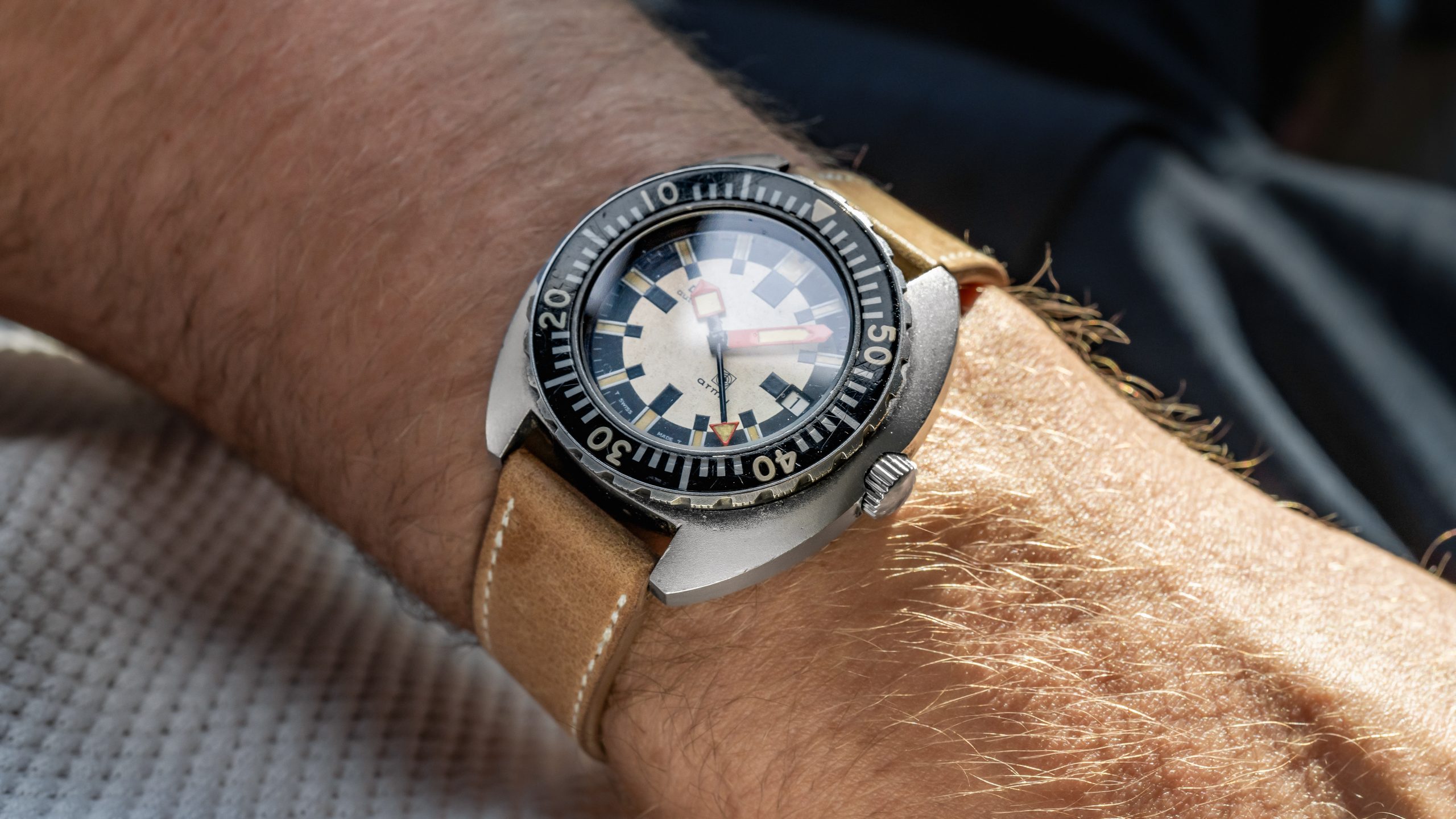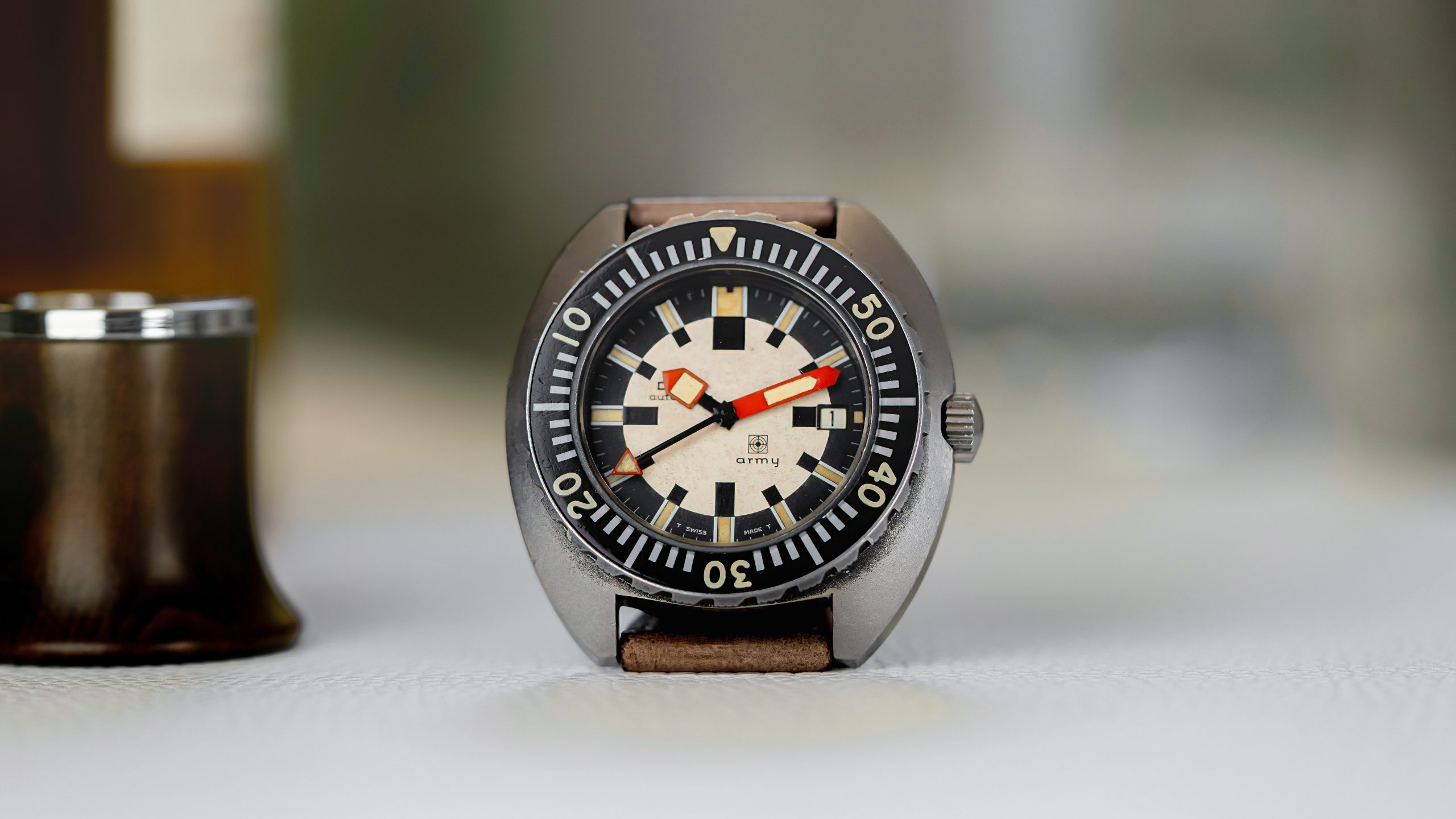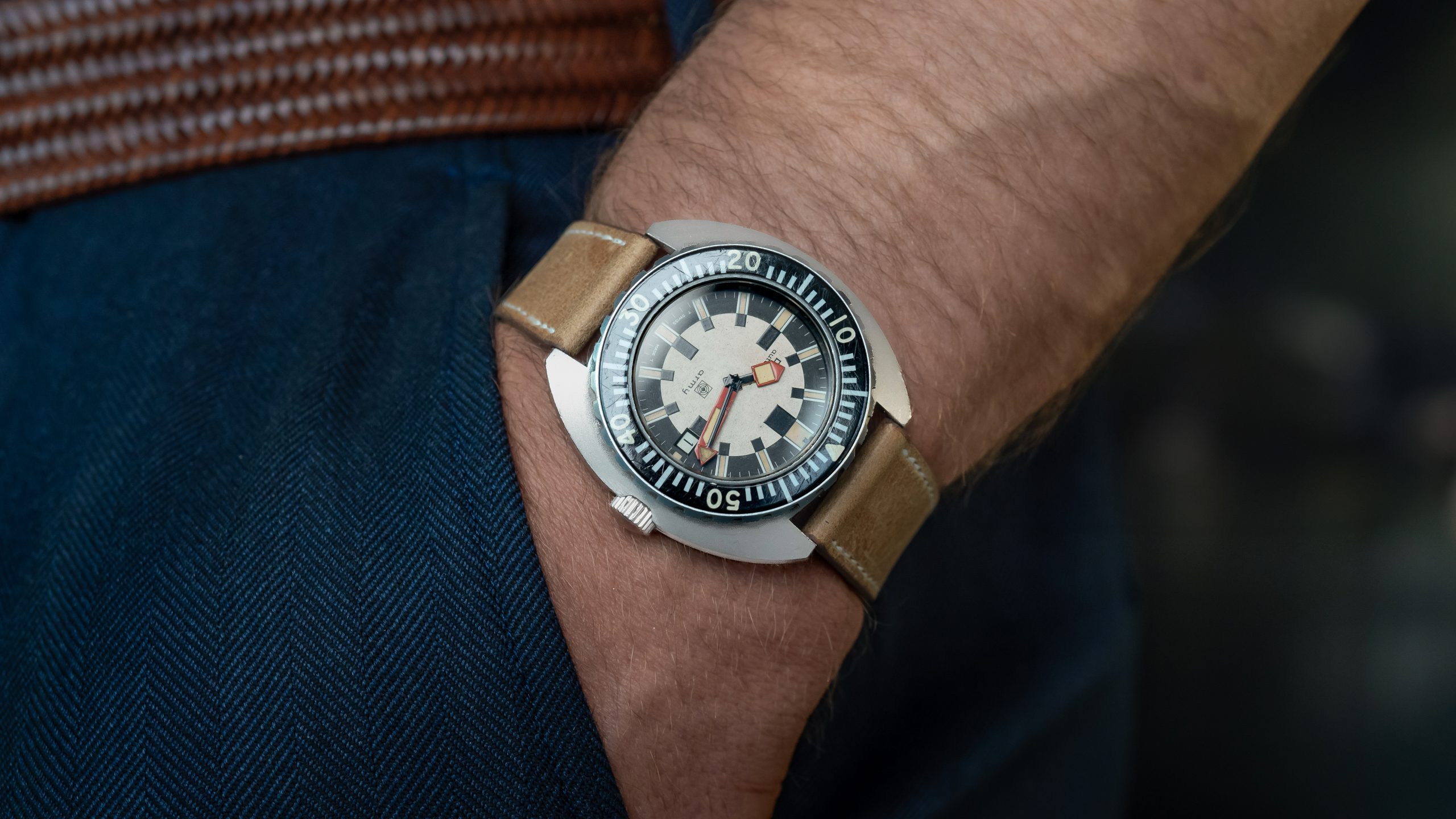The vintage Doxa Army, ref. 11891-4, is an exceptionally rare military diver that has developed a cult following due to its unique, bold aesthetic and captivating origin story. It was shrouded in mystery until recent years, rarity in both examples known and information available to collectors led to great debate around the military connection implied by the ‘Army’ name. Its similarities in design led some to opine the Army to be a rare variant of Doxa’s Sub 300T, while others were unwilling to overlook the critical structural differences between the two cases. Adding further confusion, old production catalogues featured the Army with black cases, where the few preserved examples known appeared to show uncoated steel cases. Doxa eventually investigated the Army’s provenance as part of their recent reissue, tracking and locating a number of examples as well as previous owners to confirm its origin. The truth was better than the myth.
This investigation eventually led back to Swiss military Veterans who confirmed its identity as a purpose built watch that was issued to Swiss Military divers. After selling a batch of ~150 Doxa Sub 300T dive watches in 1968 to the Swiss Military’s most elite combat diver unit, Doxa produced the Army explicitly for the military between 1969 and 1975. These watches were used heavily by combat divers and rescue swimmers, eventually retiring with the Veterans to which they were issued before entering the civilian market. The original cases used an ‘oxidized’ coating, oil dipped and fired to create a matte black finish, designed to prevent glint and shine during clandestine operations. Given their heavy use, this black coating was easily worn away and some owners decided to intentionally strip it; this example still presents the original coating between the lugs and on the caseback where it was naturally protected from wear. The Army and its finish present an extra level of charm when compared to modern PVD equivalents. While similar in heritage to Tudor Marine Nationale pieces, which slowly evolved in part due to MN input, this watch was purpose built for military applications from day one.
The Doxa Sub 300T and its predecessor, the thinner Sub 300, are the clear foundation for the design of the Doxa Army, yet the Army is significantly more spartan and brutish. It differs to the Sub 300T in its bakelite countdown bezel, rather than steel decompression bezel, and features a redesigned caseback with crosshair ‘Army’ logo. The 11.5mm-thin Army case is thinner than the 300T’s 13 mm and features a sand-cream dial. The Army utilizes unique fat and highly lumed orange hands to create exceptional visibility in all conditions. A saw tooth edge on its uni-directional bezel provides both an aggressive look and a high degree of purchase upon manipulation. The reversing contrast color scheme of the almost-sector dial combined with the rectangular indices, though clearly not its intent, remind of a modern digital camouflage pattern. While it is unclear what level of influence the Swiss Military had in the design process, it is clear that the designer prioritized functionality.
The Army is a watch of extremes, not only in its purpose driven aesthetic but in the opinions it elicits. It is a watch that evokes either love or hate, there is no middle ground. From all, however, it does possess a certain intrigue as, even still, so little is known of its origin. Regardless of which camp in which you fall, in a watch world that is so heavily dominated by a high emphasis on design language and nuance, it is both interesting and refreshing to study one of the few examples of function dictating form.




















